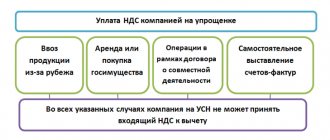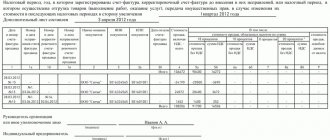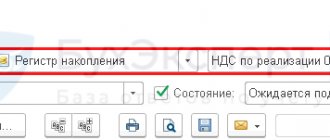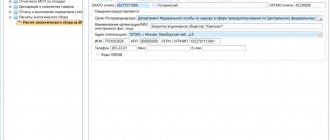Chart of accounts
Let me remind you that accounting accounts serve to group certain assets or liabilities. Each account is assigned a numerical value from 1 to 99, so as not to write the full name of the group each time. The account consists of two parts: debit and credit, which reflect the increase or decrease of accounting objects. A posting is a record of changes in data on accounting accounts. This entry is always made as a debit to one account and a credit to another.
So, you don’t need to invent the numbering, as well as the grouping of assets, on your own; the Ministry of Finance did this long before you, approving a “new” Chart of Accounts in 2000 (before that, accounting accounts had completely different numbers)
. You can get acquainted with it using this link.
Some organizations have the right to shorten this Plan or, on the contrary, supplement it (gaps were initially included in the numbering)
, but I advise you to immediately accept it as it is. Most accounting programs are tailored to the generally accepted Chart of Accounts, and your initiative will require significant changes to the underlying algorithms. Of course, no one will change the functionality to suit your needs for free.
For each account, the Plan contains a description and a list of so-called “corresponding” accounts. These are the accounts with which the account in question can participate in transactions. For example, goods do not directly correlate with money in the cash register and bank (suddenly!)
, first, through the purchase/sale, a debt must arise from the buyer or to the supplier. I don’t recommend focusing on this now, but in the future it’s worth returning to the Chart of Accounts at least occasionally to check your “insight” regarding the preparation of new entries.
How to reflect the return or exchange of air tickets in accounting?
The organization buys air tickets for business travelers by bank transfer. Sometimes tickets need to be returned or exchanged before being issued to an accountable person.
How to reflect this in accounting? For an employee sent on a business trip, the organization is obliged to compensate travel expenses (Part.
1 tbsp. 168 Labor Code of the Russian Federation). In this case, the employer can either give the employee money to purchase tickets or buy tickets for him independently. Therefore, the purchase of an air ticket is reflected by the following entries:
- Dt 60 Settlements with suppliers and contractors - Kt 51 “Settlement accounts” - payment for the ticket is transferred to the selling organization;
- Dt 50.3 “Cash documents” – Kt 60 – the purchased ticket is accepted for accounting.
The procedure for recording transactions for issuing purchased tickets to employees is not legally established.
The cost of purchased air tickets is reflected as part of monetary documents on account 50 “Cashier”, subaccount 50-3 “Cash documents”, in the amount of actual costs for their acquisition (Instruction, approved by order of the Ministry of Finance of Russia dated October 31, 2000 No. 94n). The organization must independently determine such a procedure in local regulations (clause 7.1 of PBU 1/2008). The costs of purchasing an air ticket are expenses that arise for an organization as part of its labor relations with employees. Such expenses relate to expenses for ordinary activities and are recognized in the reporting period to which they relate (clauses 5, 16, 18 of PBU 10/99). If the air ticket is returned to the supplier, the following entries should be made in accounting:
- Dt 60 “Settlements with suppliers and contractors” - Kt 50.03 “Cash documents” - the ticket was returned to the seller;
- Dt 51 “Settlement accounts” – Kt 60 “Settlements with suppliers and contractors” - the seller transferred the cost of the returned ticket;
- Dt 91.2 “Other expenses” - Kt 60 “Settlements with suppliers and contractors” - the difference between the cost of the returned ticket (excluding VAT) and the amount received when returning the ticket is taken into account as part of other expenses.
When exchanging a ticket for another ticket, the following entries are made in accounting:
- Dt 60 “Settlements with suppliers and contractors” - Kt 50.03 “Cash documents” - the ticket was returned to the seller for subsequent exchange;
- Dt 50.3 “Cash documents” – Kt 60 – a new ticket is accepted for accounting;
- Dt 71 “Settlements with accountable persons” - Kt 50.3 “Money documents” - an air ticket was issued to an employee for a trip;
- Dt 20 (26, 44, etc.) – Kt 71 “Settlements with accountable persons” - the cost of the ticket is included in expenses.
Accounting for tickets in accounting
Unlike a paper ticket, it is an entry in a database.
An electronic air ticket, like a paper ticket, is an official document certifying the conclusion of an Air Carriage Agreement between the airline and the passenger (clause
2 tbsp. 786 of the Civil Code of the Russian Federation). In an electronic travel ticket, information about the railway transportation of a passenger is presented in electronic digital form and is contained in the automated control system for passenger transportation on railway transport. A control coupon of the electronic travel document is generated for each passenger after purchasing a ticket via the Internet.
In this case, the control coupon is valid in any form: image on a mobile phone, in e-mail, printout, etc. However, the control coupon of an electronic travel document serves as a strict reporting form that can be directly used for financial transactions.
Service fee. Features of accounting.
A common misconception when accounting for paid service fees is to classify the payment of commission to the intermediary company as travel expenses. Service fee for the sale of tickets in the list of business travel expenses in accordance with Art. 264 clause 1 clause 12 of the Tax Code of the Russian Federation is not specified.
The service (commission) fee of the intermediary company, not included in the transportation tariff, is recognized for the purposes of calculating income tax as other expenses associated with production and sales (clause 3, clause 1, article 264 of the Tax Code of the Russian Federation). The fee amount is written off as expenses not after the end of the business trip, but at the time of purchase of the ticket.
Example: Tekhnoservice LLC purchased a ticket from an intermediary on January 24, 2019 by bank transfer.
| Date of operation | Contents of operation | Debit | Credit |
| 24.01. | Paid the cost and service fee from the current account | 60 | 51 |
| 24.01. | Received itinerary receipt in electronic form | 50.3 | 60 |
| 24.01. | The cost of the intermediary service is reflected | 26 | 60 |
Additional expenses on an air ticket: tax considerations
Question: An employee sent to Russia purchased air tickets. Payment for air tickets was made from his salary card, to which the advance was transferred. Upon arrival from a business trip, the employee presented an itinerary receipt, which indicated: the passenger's fare, service fee (including VAT) and payment system commission. Can service fees and payment system commissions be included as expenses when calculating income tax?
Answer: According to the author, there are grounds for classifying these expenses as expenses taken into account for taxation (hereinafter referred to as tax expenses).
First of all, the existence and validity of such payments are indicated by the norms of aviation legislation.
Aviation rules for regulating commercial conditions for air transportation were developed on the basis of the legislation of Belarus, taking into account its international obligations, standards and recommended practices of the International Civil Aviation Organization for the purpose of commercial regulation of air transportation carried out by civil aircraft of Belarusian and foreign carriers using airspace and airfields (landing areas ) civil aviation of the Republic of Belarus <*>.
To avoid additional inconvenience for clients of Belarusian carriers, all types of fees for passenger service at the airport are, as a rule, included in the ticket price with subsequent mutual settlements between the carrier and the airport. Any other tax or fee is paid by the passenger in addition to the fare, unless otherwise provided by the legislation of the Republic of Belarus <*>.
The contents of an electronic ticket (electronic flight, electronic control and electronic agent coupons) include:
tariff amount;
taxes and fees along the entire route;
total amount for the ticket <*>.
The e-ticket itinerary/receipt includes all the information contained in the e-ticket, as well as the notice contained in IATA Resolution N 724, and in accordance with paragraph 3 of Resolution N 76, the e-ticket and the e-ticket itinerary/receipt may also contain other additional information about the conditions of transportation or features of servicing passengers and baggage <*>.
Thus, departmental regulatory legal acts provide grounds for the presence in aviation transportation documents and, accordingly, the inclusion of fees and similar payments in the cost of transportation (ticket).
A posted employee is reimbursed for air travel expenses to the place of assignment and back at an economy class fare <*>.
The above expenses are reimbursed upon mandatory submission by the employee of supporting documents in the original (travel tickets, invoices, receipts and boarding passes when purchasing electronic travel tickets, etc.) <*>.
In addition, the posted worker is reimbursed for the costs of paying the mandatory fee (duty) collected from citizens at airports <*>.
When purchasing travel documents through the global Internet, otherwise known as electronic tickets, the documentary evidence of travel expenses subject to reimbursement to the posted worker when transporting a passenger by air is a paper itinerary receipt and a boarding pass (passenger boarding pass coupon) <*>.
Taking into account the above, the amounts of fees (commissions) included in the itinerary receipt as an integral part of the cost of transportation are subject to reimbursement to the posted employee as part of travel expenses <*>.
Accordingly, based on paragraph 1 of Art. 130 of the Tax Code, such travel expenses are included in tax expenses, taking into account the limitation established by sub. 1.6 clause 1 art. 131 NK.
Balances, active and passive accounts
There is nothing particularly mysterious about the term “balance”; it is simply the balance in an accounting account. This balance is calculated as the difference between the total debit and credit amounts of the account. Accordingly, depending on the turnover, the balance may be formed by debit (debit balance)
or and on the loan
(credit balance)
.
The balance may be at the beginning of the period, then it is called “initial (or incoming)
balance" and denote Sn.
Or at the end of the period, then they say “final (or opening)
balance and denote Sk.
The sum of debit and credit turnover is denoted as Od (debit turnover)
or Ok
(loan turnover)
.
The period under consideration can be absolutely anything, but usually they still mean the beginning and end of the month or year.
Let's upgrade our "airplane" taking into account the knowledge gained.
There can never be too many airplanes...
Using the example, we see that at the beginning of the period we had materials in our warehouse totaling 1,000 rubles (initial balance). Then another batch arrived for 2,000 rubles, after which all the materials were written off for something. The final balance became zero.
Please note that some accounts may have a balance of only debit or only credit. Take our “Materials” account. Receipts, as you already understood, are reflected as a debit to this account, and write-offs as a credit. Do you think it could happen that we write off more materials than were in stock? To be honest, this can be achieved in an accounting program, but it would be an obvious and gross mistake. In reality, it will not be possible to use materials that we do not yet have. Therefore, the balance on the account is possible only by debit. Such accounts are called “active”. From the word “asset”, since they mostly account for the property of the enterprise.
On the contrary, there are accounts that record exclusively the obligations of our company, for example account 66 “Settlements for short-term loans and borrowings.” They lent us money and we are gradually paying it back. But if we transfer more money to the lender than we took (even taking into account interest)
, then this will not be a “reverse credit”, but an erroneous payment and it will be taken into account on another account. Therefore, the balance can only be on a loan and such an account is called “passive”. From the word “liability”, they mainly reflect the company’s obligations.
Many accounts can have both a debit and a credit balance; they are called “active-passive”.
Some accounts have no balances at all, since at the end of the period the amounts on them are necessarily written off to other accounts.
Electronic air ticket and documentary evidence of tax expenses
After the easing of Covid restrictions, air travel began to revive. The demand for tickets is growing, a significant part of which is now issued in electronic digital form. Features of tax accounting for expenses for the purchase of electronic air tickets are noted in the letter of the Ministry of Finance of Russia dated January 15, 2021 No. 03-03-06/1/1448.
General standards
Financiers recalled that although purchased air tickets are electronic, no one has canceled the rules for documenting expenses in both accounting and tax accounting.
Each fact of economic life must be documented in a primary accounting document (Article 9 of the Federal Law of December 6, 2011 No. 402-FZ “On Accounting”).
For profit tax purposes, expenses must be documented (Article 252 of the Tax Code of the Russian Federation).
The structure of an electronic ticket and what it certifies
If an air ticket is purchased in undocumented form, how can you confirm the costs of purchasing it?
To answer this question, the Russian Ministry of Finance turned to Order No. 134 of the Russian Ministry of Transport dated November 8, 2006. This document established the forms of electronic passenger tickets and baggage checks in civil aviation. An electronic passenger ticket certifies the contract of carriage
, in which information about the passenger’s movement is presented in electronic digital form.
The structure of an electronic ticket includes, in particular, an itinerary receipt and an electronic flight coupon. An itinerary receipt is an extract from the automated information system for registration of air transportation.
Route receipt
– a document of strict reporting (clause 2 of order No. 134). It is used by companies and individual entrepreneurs to carry out cash payments or payments using payment cards without the use of cash registers.
The itinerary receipt, in addition to information about the passenger, flight and carrier, contains data on the total cost of transportation.
Electronic flight coupon
along with other information, it contains statuses about check-in and that the passenger has boarded. There is also information about printing a coupon.
The final conclusion of the financiers is this: when purchasing a ticket in electronic form, supporting documents are the generated itinerary receipt indicating the cost of the flight, as well as the boarding pass
, confirming the passenger’s flight on the route specified in the electronic ticket.
The role of the boarding pass
Order No. 134 does not mention a boarding pass. The fact that such a document is issued to a passenger upon check-in at the airport is stated in the federal aviation regulations (clause 84) (approved by order of the Ministry of Transport of Russia dated January 14, 2019 No. 7). An electronic boarding pass contains a barcode that can be read by the airport information system. Therefore, an electronic boarding pass is used only if the airport has an information system. It is the boarding pass that gives you the right to board the plane. At the airport, you can show your electronic boarding pass from the screen of your phone, tablet or laptop. But for accounting purposes you need to print it out.
The passenger can:
- print your boarding pass yourself;
- obtain a paper boarding pass at the airport or at check-in points located outside the airport.
The barcode and QR code must be clearly visible on the printout.
The boarding pass, including an electronic ticket, received during electronic check-in for a flight, contains the relevant details. They confirm the fact that the passenger has consumed the air transportation service. This requisite is usually a security stamp, which is affixed to the documentary boarding pass.
Other ways
Let's assume that there is no stamp on the boarding pass (or the pass is lost). How to be in this case? You cannot confirm flight expenses by printing only an electronic ticket
(Resolution of the Federal Antimonopoly Service of the Ural District dated October 25, 2013 No. F09-11046/13 in case No. A47-10866/2012).
The most popular other way to confirm the fact of air transportation is a certificate containing the information necessary to prove the flight.
. A certificate (a certified statement of the flight) is issued by the air carrier or its representative (letters of the Ministry of Finance of Russia dated 02/28/2020 No. 03-03-06/1/14640, dated 01/13/2012 No. 03-03-06/1/11).
In a situation where the stamp was not affixed and the certificate could not be obtained, the taxpayer has the right to justify the consumption of air transportation services with any other documents that directly or indirectly confirm the fact of using the purchased air tickets
(letter of the Ministry of Finance of Russia dated December 18, 2017 No. 03-03-RZ/8440).
In letter No. 03-03-06/1/1448, financiers noted that the Tax Code of the Russian Federation does not establish a specific list of documents that confirm expenses incurred.
Thus, the Tax Code of the Russian Federation does not limit the taxpayer in confirming the legality of accounting for relevant expenses.
How else can you confirm the fact of the flight, at least indirectly?
According to experts, the fact of the flight can be confirmed by customs marks in the international passport.
This method is effective when flying to foreign countries.
Some people believe that if you have a ticket, as a last resort, you can refer to the hotel account issued to the same employee for whom the air ticket was issued. The method is controversial, but, you see, if the employee lived in a hotel out of town, somehow he got there.
This is where the offers end. So having a stamped boarding pass is by far the best supporting document.
Proof of payment
In conclusion, let us remind you of the need to save documents confirming payment for an electronic air ticket:
- KKT and BSO checks (when paying in cash);
- slips (when purchasing using a bank payment card), electronic terminal checks (when paying with a bank card, the holder of which is an accountable person (when paying by bank card without using websites));
- confirmation of payment by the bank.
What are accounting entries?
Every day millions of payments are made around the world. They are made by both ordinary people and businesses. Any business must take into account its own payments to keep them under control. Therefore, any payment is accounted for through accounting entries.
Accounting entries are accounts drawn up on actual papers, reflecting the amount of a business transaction that is subject to accounting.
Any information about actions performed on accounts is marked with a double entry, i.e. in the debit of one account and in the credit of another, for an identical amount. With its help, all accounts assume a single interconnected structure.
The relationship between debit and credit settlements, formed in the process of double entry, is called a correspondent accounts account, and the accounts participating in this relationship are called correspondent accounts.
To understand the concept of accounting for debit and credit accounts, the following features of account accounting were introduced into accounting:
- asset – reflects the values owned by the organization;
- liability – displays the organization’s debt to creditors;
- active-passive account – displays one-time debit and credit debt.
What is writing off accounts receivable with an expired statute of limitations and in what order this procedure is carried out - read the link.
To be continued
I hope everything was clear, and you didn’t hang yourself from boredom)) It’s very difficult to find a balance between tediousness and tediousness, while presenting information in a way that makes it clear to anyone.
In the next article, I propose to consider more typical situations, and at the same time we will discuss some other accounts.
All the best! Bye bye!
This article was originally published on my website AngyBuh.su
Accounting: accounts and postings
Accounting for travel tickets
For employees sent to carry out official assignments in places remote from the workplace, the employer must reimburse the cost of any types of travel tickets. It should be reflected as part of the cost of monetary documents in subaccount 50.3.
Expenses for business trips cannot be written off immediately as expenses or attributed to accountable persons without intermediate entries. The correct scheme for reflecting employee travel costs looks like this:
- D50.3 – K60 – posting is drawn up at the time of receipt of travel documentation;
- D19 – K60 – VAT is allocated from the ticket price;
- D71 – K50.3 – tickets were issued to the employee, the transaction amount is indicated excluding VAT;
- D26 - K71 - posting indicates the recognition of travel expenses after approval of the advance report.
You can deduct VAT on travel if you have an invoice, or if the tax is highlighted as a separate line in the travel document (route receipt, control coupon) - Letter of the Federal Tax Service dated 01/09/2017 No. SD-4-3/ [email protected]
Features of accounting activities
Previously, such accounting was not used in practice by all companies, but nowadays these rules and regulations have become more stringent. Accounting entries are used by both large enterprises and individual entrepreneurs operating through the simplified tax system.
For a number of organizations, ensuring the “cleanliness” of accounting due to an annual audit plays an extremely important role. This applies to the following types of enterprises:
- joint stock companies;
- members of areas that are related to securities;
- financial and credit institutions;
- non-state pension funds.







